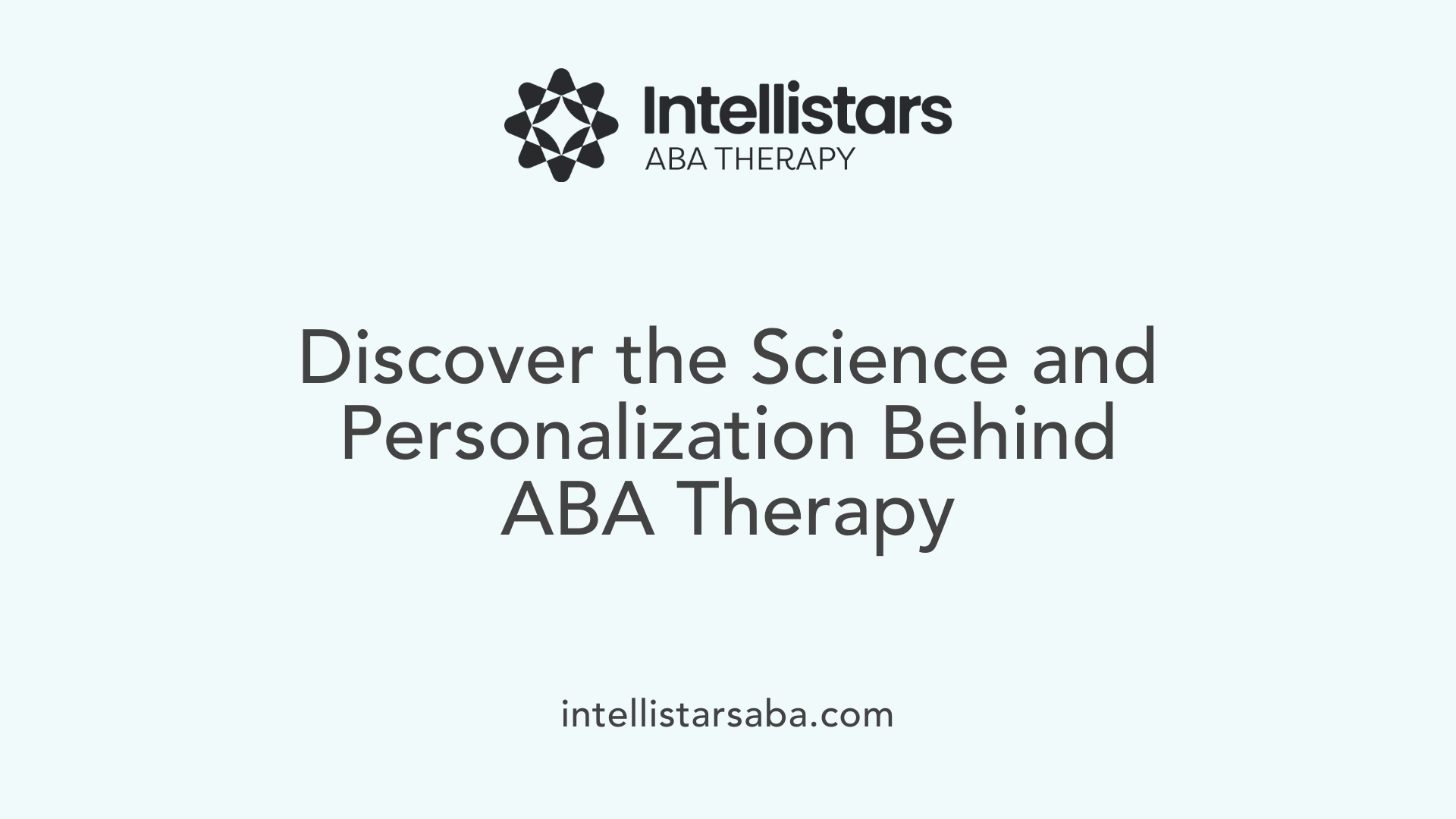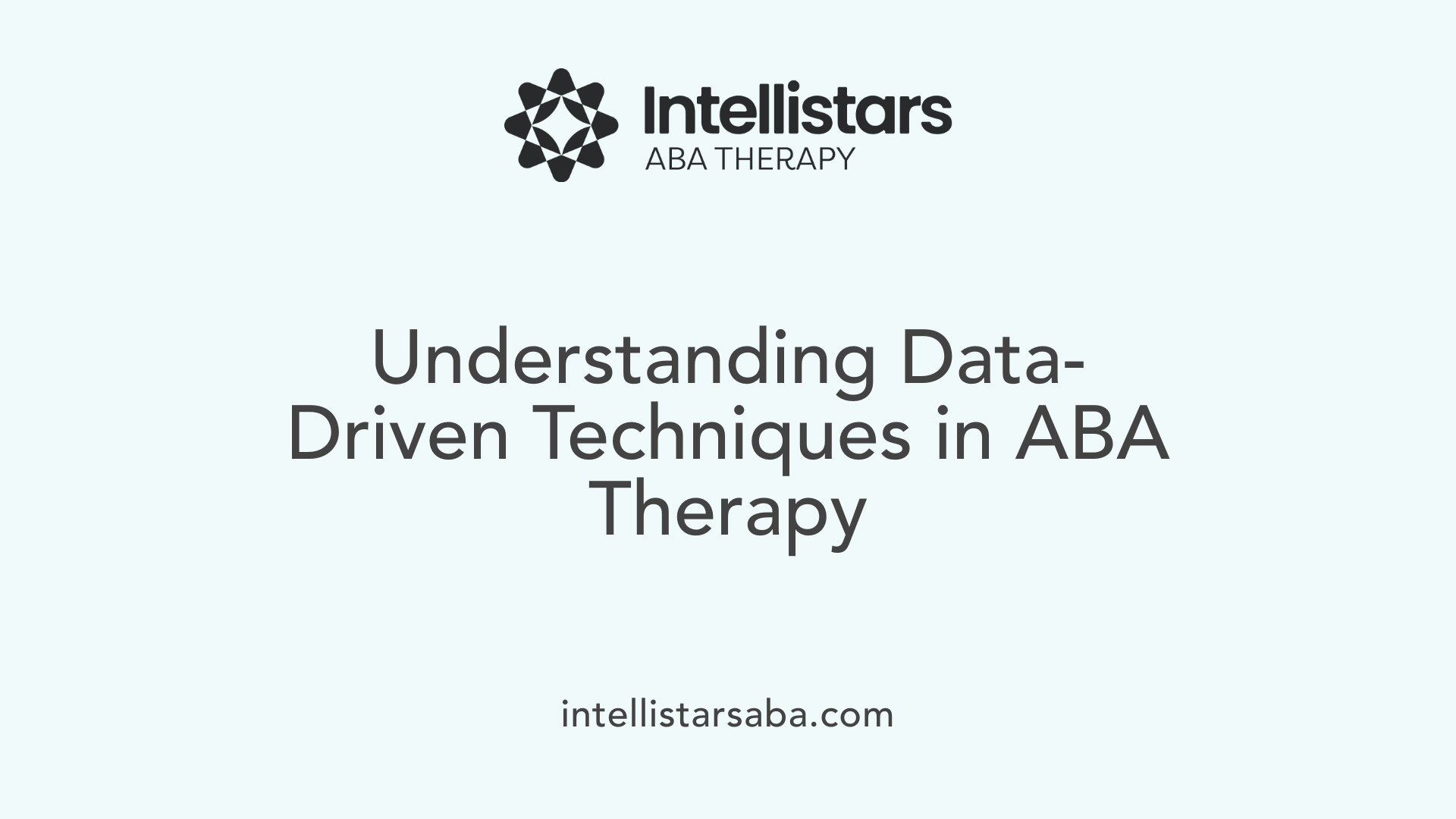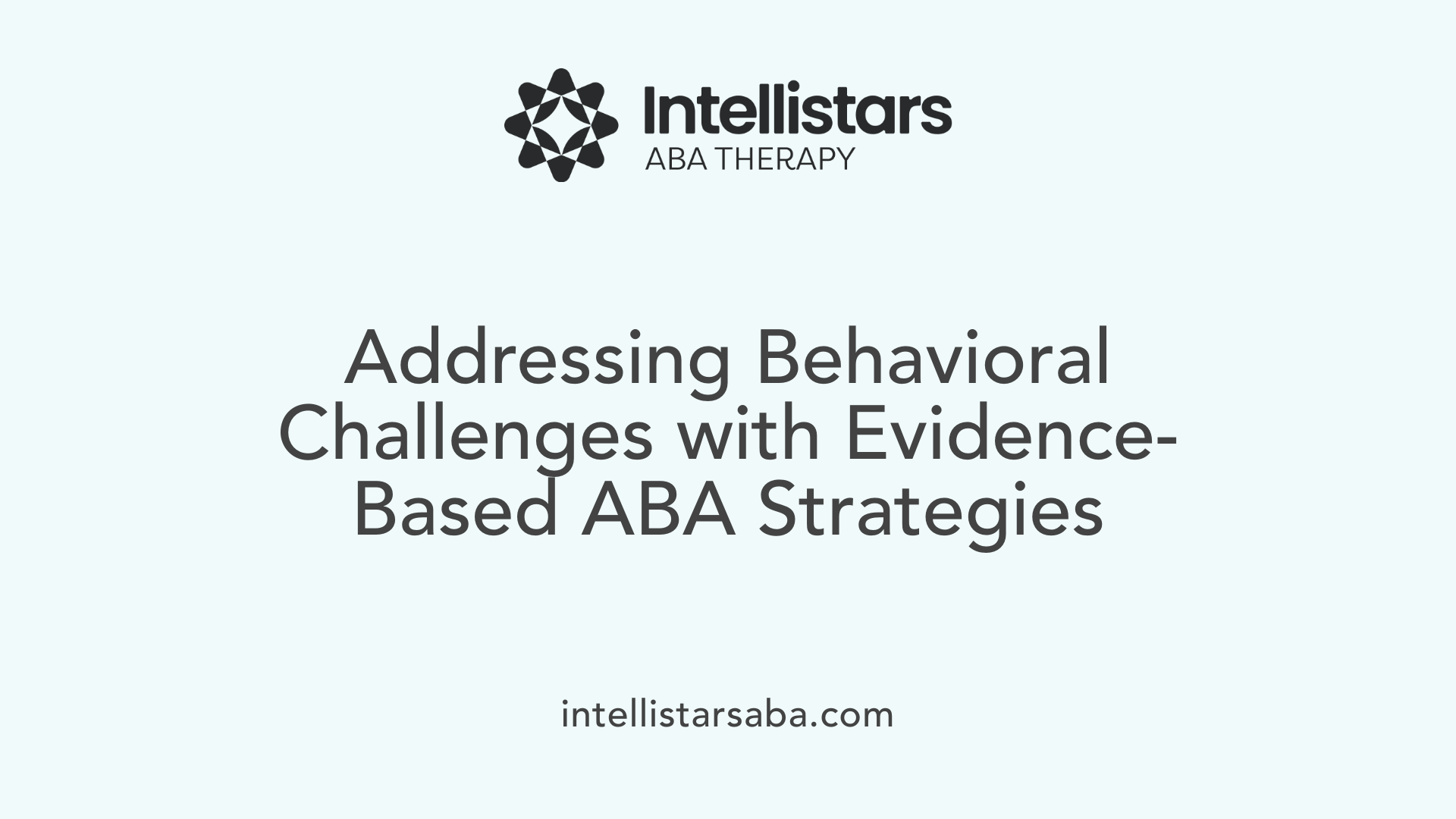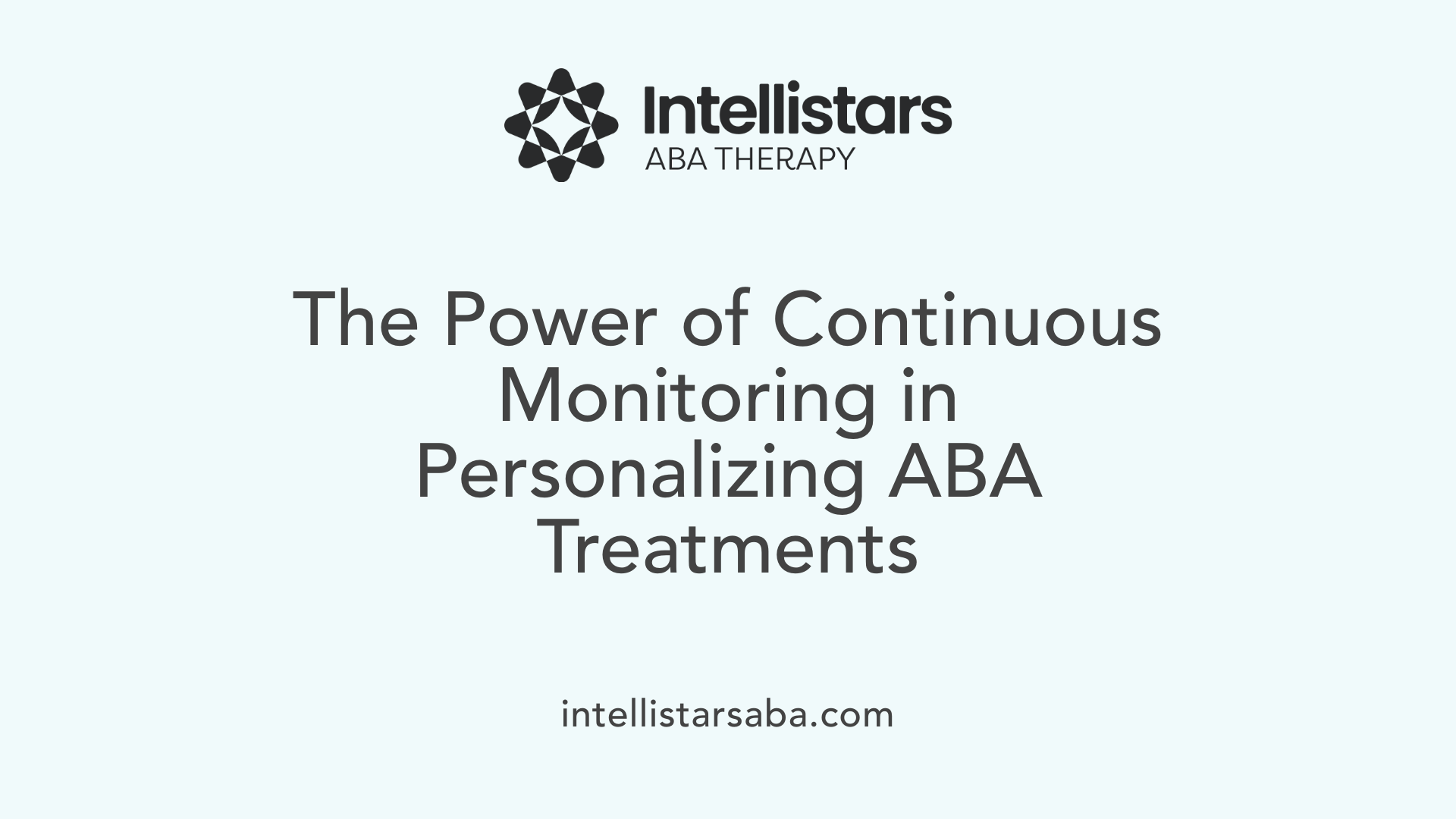Understanding the Critical Role of Data in ABA Therapy
Applied Behavior Analysis (ABA) therapy stands as a scientifically validated approach designed to support individuals with autism spectrum disorder (ASD) by fostering meaningful behavioral changes. Central to its effectiveness is the systematic collection and careful analysis of progress data. Continuous progress monitoring not only informs treatment adjustments but also ensures that interventions remain relevant and responsive to each individual's evolving needs. This article explores the multifaceted benefits of ongoing data-driven monitoring within ABA therapy, illustrating why it is a cornerstone of high-quality, personalized care.
Foundations of ABA Therapy: Scientific Principles and Individualization

What is Applied Behavior Analysis (ABA) therapy for autism?
Applied Behavior Analysis (ABA) therapy is a scientifically supported approach designed to improve socially significant behaviors in individuals with autism. It focuses on increasing helpful behaviors while reducing harmful or challenging ones. ABA uses principles like positive reinforcement and detailed analysis of antecedents, behaviors, and consequences to teach new skills and modify existing behaviors.
Definition and core principles of ABA therapy
ABA therapy centers on understanding how behavior works in relation to the environment. It employs behavioral learning principles to promote skill acquisition and reduce maladaptive behaviors. Core elements include:
- Positive reinforcement: Rewarding desired behaviors with praise, tokens, or preferred items to encourage their repetition.
- Data-driven approach: Systematic collection and analysis of behavioral data during therapy sessions to customize and adjust interventions.
- Individualization: Personalized treatment plans tailored to the unique needs, strengths, and challenges of each individual.
How ABA is rooted in scientific research
ABA is grounded in over 50 years of scientific research validating its effectiveness. This evidence base is reflected in case law, credentialing standards, and clinical guidelines, establishing ABA as a best-practice treatment for Autism Spectrum Disorder (ASD). Its success depends on:
- Rigorous data collection and progress monitoring.
- Ongoing evaluation and treatment adjustments based on empirical outcomes.
- Use of evidence-based techniques demonstrated through peer-reviewed studies.
Individualized nature of ABA treatment plans
Treatment planning is personalized and dynamic. Board Certified Behavior Analysts (BCBAs) design individualized programs after comprehensive assessments of a child's abilities and needs. These plans focus on maximizing functioning, supporting skill development, and reducing challenging behaviors with consideration for natural environments and cultural sensitivity. Regular progress reviews enable:
- Data-informed modifications to therapy goals.
- Tailoring of interventions to evolving needs.
- Inclusion of caregiver involvement to support consistency and skill generalization.
ABA therapy's scientific foundation and focus on individualization create a structured yet flexible framework that effectively supports children with autism in acquiring valuable skills and fostering independence.
How ABA Therapy Works: Data Collection and Tailored Interventions

Behavior Analysis Through Antecedents and Consequences
ABA therapy begins with understanding the connection between antecedents (triggers), behaviors, and their consequences. By observing what happens before and after a behavior, therapists can identify patterns influencing the behavior's occurrence. This analysis helps in developing strategies that encourage positive behaviors and reduce challenging ones.
Breaking Skills Into Manageable Steps
Complex skills are divided into small, achievable steps. This breakdown makes learning less overwhelming and promotes gradual mastery. For example, a skill like conversation is taught by first focusing on simple components such as greeting or turn-taking. This systematic approach supports consistent progress.
Use of Positive Reinforcement
Desired behaviors are encouraged using positive reinforcement, which involves rewarding successful actions with praise, tokens, or access to preferred items. This method increases the likelihood that those behaviors will be repeated, fostering motivation and engagement during therapy.
Role of Data Collection in Therapy Adjustments
Precise, ongoing data collection is fundamental to ABA therapy. Therapists gather detailed information during each session, tracking behaviors and skill acquisition. Board Certified Behavior Analysts (BCBAs) and Registered Behavior Technicians (RBTs) use this data to evaluate progress, make informed treatment adjustments, and ensure interventions remain effective and personalized. This continual measurement allows for dynamic tailoring of therapy to the individual's evolving needs.
Overall, ABA therapy applies learning principles in a structured, evidence-based way that enhances social, communication, and daily living skills. Family involvement and consistent progress monitoring integrate to provide a comprehensive, individualized intervention that adapts over time to maximize outcomes for individuals with autism.
Professional Roles Ensuring Effective and Data-Driven ABA Therapy

Who provides ABA therapy and what qualifications do professionals typically have?
ABA therapy is delivered by a team of specialized professionals who ensure interventions are personalized and data-driven. The primary providers include Board Certified Behavior Analysts (BCBAs), Registered Behavior Technicians (RBTs), and, in some cases, Board Certified Assistant Behavior Analysts (BCaBAs).
Qualifications of BCBAs, RBTs, and BCaBAs
BCBAs hold graduate-level degrees and certification from the Behavior Analyst Certification Board (BACB). They are responsible for designing individualized treatment plans, interpreting behavioral data, and overseeing the entire therapy process. BCaBAs possess certification to support BCBAs in treatment design and implementation but generally work under BCBA supervision. RBTs provide direct therapy to clients, implementing the treatment plans created by BCBAs and meticulously collecting data on client behaviors.
Supervision and training requirements
RBTs and BCaBAs perform their roles under the direct supervision of BCBAs to ensure fidelity to treatment protocols. All practitioners undergo initial training, ongoing competency assessments, and continuing education to maintain their credentials. This structure maintains high standards of care and ensures the therapy remains adaptive and responsive to client progress.
Importance of professional expertise in data collection and interpretation
Both BCBAs and RBTs play crucial roles in collecting precise behavioral data each session. This careful data collection allows for continuous progress monitoring and informed decisions to adjust interventions. The data-driven approach, fully supported by the professionals' expertise, ensures therapy remains effective, efficient, and personalized to the evolving needs of each child.
Parents and caregivers are encouraged to inquire about the qualifications and supervision frameworks of their ABA providers to ensure professional standards are upheld and therapy is tailored effectively.
Behavioral Challenges Addressed Through Data-Driven ABA Interventions

What types of behavioral challenges in autism can ABA therapy address?
ABA therapy effectively addresses a range of behavioral challenges commonly seen in children with autism spectrum disorder (ASD). These include aggression, tantrums, self-injurious behavior, refusal, and property destruction. Through applied behavioral techniques, ABA targets these challenging behaviors to reduce their frequency and intensity.
How are functional communication and social skills developed in ABA therapy?
Functional communication training (FCT) is a central ABA strategy used to replace problematic behaviors with effective communication methods, such as the Picture Exchange Communication System (PECS). This empowers children to express their needs and feelings, reducing frustration-driven behaviors. Additionally, ABA promotes social skills development by employing role-playing, social stories, and teaching recognition of social cues, which improve interpersonal engagements and peer interactions.
How is intervention customized and refined through data monitoring?
ABA therapy relies on continuous data collection and progress monitoring during sessions. Registered Behavior Technicians (RBTs) collect detailed behavioral data, which Board Certified Behavior Analysts (BCBAs) use to tailor and adjust individualized treatment plans. This data-driven approach ensures that interventions remain effective and responsive to each child’s evolving needs, maximizing skill acquisition and minimizing problematic behaviors.
This systematic and personalized treatment framework helps children not only to manage challenging behaviors but also to gain meaningful functional and social skills that enhance independence and quality of life.
The Evidence Base: Validating Progress Monitoring and ABA Effectiveness
What is the evidence supporting the effectiveness of ABA therapy for autism?
Numerous scientific studies and meta-analyses over the past 50 years have consistently demonstrated that ABA therapy produces meaningful improvements for individuals with autism spectrum disorder (ASD). Intensive ABA programs, especially those delivering 25-40 hours per week over multiple years, have been linked to significant gains in cognitive abilities, expressive language, socialization, and adaptive behaviors.
Meta-analyses evaluating data from multiple clinical trials show robust effects on IQ and communication skills, while also reporting moderate benefits in social and daily living areas. These findings underscore ABA's role as a best-practice, evidence-based intervention for ASD, endorsed by organizations such as the American Psychological Association and the US Surgeon General.
Scientific studies supporting ABA
Research rooted in behavioral science highlights how ABA's principles—such as positive reinforcement, task breakdown, and individualized treatment—can effectively modify behaviors and promote skill acquisition. Longitudinal studies demonstrate that early and consistent ABA intervention enhances developmental trajectories, helping children learn to communicate, interact socially, and manage challenging behaviors.
ABA's structured, data-driven approach allows clinicians to precisely tailor interventions to each child’s needs and track progress objectively. This rigorous methodology ensures that therapy adjustments are informed by real-time data, which improves outcomes and fosters generalization of skills across natural environments.
Meta-analyses showing skill improvements
Meta-analytical reviews of ABA therapy document:
- Large effect sizes in IQ and expressive language development
- Moderate improvements in social interaction and daily living skills
- Reduced maladaptive behaviors, including aggression and self-injury These analyses confirm that ABA supports gains in foundational and complex skills essential for independence and quality of life.
Importance of continuous data for validating outcomes
A cornerstone of ABA is continuous and precise data collection during therapy sessions. Behavior analysts use this data to regularly evaluate progress, adjust treatment plans, and ensure interventions remain effective and least restrictive.
Ongoing monitoring every 90 days and the use of advanced behavior analysis software facilitate this process, enabling clinicians to visualize trends, validate skill acquisition, and respond promptly to changes. Such systematic progress tracking is crucial for maximizing treatment impact and maintaining transparency with families and funding sources.
In summary, scientific evidence strongly supports ABA therapy as a validated, effective treatment for autism. Its success is closely tied to continuous data-driven decision making, which guarantees individualized and adaptive interventions that lead to sustained improvements in multiple domains.
Modern Challenges and Ethical Considerations in Progress Monitoring
Are there any criticisms or limitations associated with ABA therapy?
Criticisms and limitations of ABA therapy often focus on the traditional methods once prevalent in the field. Earlier approaches were sometimes seen as overly rigid and repetitive, concentrating mostly on compliance rather than acknowledging the emotional and developmental needs of the individual. This has led to concerns about manipulation and pressure to conform, which some argue may undermine personal autonomy and emotional well-being.
Modern ABA therapy has evolved significantly to address these concerns, emphasizing play-based, naturalistic, and individualized interventions. These newer methods focus on strengths, interests, and social validity to ensure that therapy is respectful and engaging. Yet, debates persist regarding how consistently these ethical standards are applied across all programs.
Another challenge is finding the right balance between intervention intensity and the individual's quality of life. While evidence indicates that intensive ABA (often 25-40 hours per week) can lead to meaningful improvements, there is ongoing discussion about how much therapy is appropriate to avoid burnout or negative impacts on well-being.
Ethical practice in ABA requires continuous progress monitoring through precise data collection. This allows clinicians, such as Board Certified Behavior Analysts (BCBAs) and Registered Behavior Technicians (RBTs), to make informed adjustments, ensuring interventions remain effective and aligned with each person's evolving needs.
Ultimately, addressing these challenges involves prioritizing social validity, respecting individual autonomy, and engaging families in treatment decisions. By maintaining transparency and flexibility, ABA programs aim to deliver quality care that balances measurable progress with the holistic well-being of the individual.
The Integral Role of Ongoing Progress Monitoring in Tailoring ABA Therapy

Why continual data collection matters
ABA therapy's foundation is its scientific basis which heavily relies on precise, ongoing data collection during each session. This continuous measurement allows clinicians to understand how behaviors respond to environmental factors and treatment strategies. Data collection by Registered Behavior Technicians (RBTs) under the supervision of Board Certified Behavior Analysts (BCBAs) ensures that therapy is not static but a dynamic process driven by real-time evidence.
Adjusting therapy based on measurable progress
The collected data is meticulously analyzed by BCBAs who design personalized treatment plans. These plans are regularly reviewed and adjusted based on measurable progress, ensuring that interventions remain effective and responsive. With structured tools and data collection every 90 days, modifications are made to support skill development and reduce challenging behaviors. Digital behavior analysis software, like CentralReach, enhances this process by enabling real-time tracking and auto-graphing of progress.
Ensuring interventions meet evolving individual needs
Children with Autism Spectrum Disorder (ASD) often have diverse and changing needs. Continuous progress monitoring allows interventions to be fine-tuned to these evolving requirements. It supports a tailored approach that maximizes children's functioning, promotes skill generalization, and incorporates family involvement. This cycle of data-driven assessment and thoughtful adjustment is essential to maintain the effectiveness and cultural sensitivity of ABA therapy, ultimately fostering consistent and measurable growth.
Technological Advances Enhancing ABA Progress Monitoring
What are the capabilities of behavior analysis software?
Behavior analysis software offers comprehensive features designed to support the complex needs of ABA therapy. These platforms include tools for data collection, progress monitoring, and detailed reporting and analytics. Clinicians can assess over 2,400 specific skills digitally, which allows for personalized treatment plans tailored to each individual's needs. Additionally, such software integrates assessment and treatment planning into a seamless workflow, boosting clinician efficiency.
How do real-time data collection and automated reporting improve ABA therapy?
Real-time data collection enables precise and timely tracking of behaviors during ABA sessions. This continuous monitoring supports immediate data-driven decision-making, facilitating rapid intervention adjustments. Automated reporting features, including auto-graphing of progress, simplify the visualization of trends over time. These capabilities ensure that therapy remains responsive to each child's evolving needs and contribute to measurable improvements.
In what ways do digital tools support clinicians and families?
Digital platforms like CentralReach enhance collaboration by providing parent training modules and AI-powered session notes, which improve documentation and compliance. These tools also offer claim checks to assist with insurance audits, supporting smooth administrative processes. For families, accessible digital resources empower involvement in treatment, fostering consistent implementation of strategies at home. The technology strengthens clinical outcomes by promoting coordinated efforts among multidisciplinary teams and caregivers, ultimately enhancing the quality and effectiveness of ABA interventions.
Family Involvement and Collaboration Through Data Transparency
Training and Engaging Parents in Progress Tracking
Family involvement is a cornerstone of effective ABA therapy, particularly in early intervention programs. Parents and caregivers receive specialized training to understand the goals and methods of therapy, enabling them to actively participate in progress tracking. This training equips families to observe and record behaviors at home, reinforcing skills learned during therapy sessions and ensuring consistency across environments.
Using Data to Guide Home Implementation
Data collected during therapy sessions is shared transparently with families, providing clear insights into the child's progress. This information guides parents in implementing targeted intervention strategies at home, tailored to their child's unique needs. By understanding real-time data, families can make informed decisions about which techniques to reinforce, enhancing skill generalization and improving behavioral outcomes.
Strengthening the Therapeutic Alliance
Open communication and data sharing foster a strong collaborative relationship between therapists and families. When parents are engaged with measurable progress reports and involved in treatment planning, the therapeutic alliance deepens. This partnership ensures that interventions remain flexible and responsive, with family input helping to tailor therapy to be culturally sensitive and relevant to daily life.
Empowering families through training and transparent data use transforms them from passive recipients to active partners in their child's development, reinforcing progress both within the therapy center and at home.
Center-Based Versus Home-Based ABA Therapy: Monitoring in Different Settings
Benefits of center-based environments for data collection
Center-based ABA therapy offers a highly controlled and structured setting optimal for precise data collection and continuous progress tracking. With specialized materials and sensory tools available, therapists can more easily observe and measure specific behaviors. The presence of experienced Board Certified Behavior Analysts (BCBAs) and Registered Behavior Technicians (RBTs) ensures consistent implementation of interventions and detailed, standardized data capture during sessions. This controlled environment supports timely, data-driven adjustments to treatment plans, helping to maximize skill acquisition and behavioral improvements.
Naturalistic monitoring at home and in communities
While center-based therapy provides controlled data collection, home and community settings offer invaluable naturalistic monitoring opportunities. Observing children in familiar environments reveals how behaviors generalize to everyday contexts and social situations. ABA programs emphasize parent and caregiver involvement to facilitate data gathering during daily routines, with quarterly in-home sessions supporting treatment decisions. These real-world data points provide rich insights into social, communication, and adaptive skills across diverse settings, ensuring interventions remain relevant and culturally sensitive.
Integrating data from multiple contexts
Combining data from center-based therapy with naturalistic observations creates a comprehensive picture of a child's progress. Behavior analysis software, like platforms supporting over 2,400 skills, enables clinicians to seamlessly integrate and analyze data from different environments. Real-time digital tools facilitate continuous monitoring and auto-generated reports for clinicians and caregivers alike. This integrated data-driven approach enhances decision-making, allowing for tailored interventions that bridge therapy sessions and everyday life, ensuring consistent, measurable growth in children with autism.
Measuring Success: Key Performance Indicators in ABA Therapy Monitoring
Assessing Treatment Retention and Transition Outcomes
Treatment retention is a critical measure of ABA therapy effectiveness, reflecting how well programs maintain engagement over time. Consistent participation ensures children receive the full benefit of interventions, supporting skill acquisition and behavioral improvements. Another vital indicator is successful transition to less restrictive environments, showing that children can generalize learned skills and manage behaviors in broader, more natural settings. This milestone demonstrates therapy progress and prepares clients for inclusive social and educational opportunities.
Family Satisfaction and Quality Improvement
Family satisfaction serves as a primary gauge of program quality, highlighting how well services meet the needs and expectations of children and their caregivers. ABA centers often gather feedback to identify strengths and address concerns, facilitating continuous quality improvement. High family satisfaction correlates with better therapy adherence and more effective home implementation of strategies, reinforcing clinical outcomes.
Use of Data in Program Development and Accountability
Data-driven decision-making underpins ABA therapy success, with continuous collection and analysis guiding treatment adjustments and outcome evaluations. Behavioral data and progress metrics inform individualized treatment plans, while aggregated performance indicators enable agencies to monitor program effectiveness and staff competencies. This accountability fosters transparency and ensures that services adhere to licensing standards, certification requirements, and best practices, ultimately promoting consistent and measurable growth for children receiving ABA therapy.
Progress Monitoring: The Backbone of Effective ABA Therapy
The continuous collection and analysis of progress data remain foundational to the success of Applied Behavior Analysis therapy for individuals with autism. This vigilant monitoring enables clinicians to fine-tune interventions responsively, ensuring personalized care that adapts to changing needs. Advances in technology further empower this process by enhancing accuracy and streamlining communication among teams and families. Despite some criticisms and challenges, the evidence strongly supports the role of ongoing progress monitoring as key to maximizing therapeutic benefits, fostering skill development, and improving quality of life. Ultimately, the commitment to data-driven practice cements ABA therapy's position as an effective, evolving, and compassionate treatment approach.
References
- How Applied Behavior Analysis Supports Children with ...
- Applied Behavior Analysis (ABA) – Early Childhood (EC) ...
- Behavioral Analysis Software for Autism Interventions ...
- Unlocking the Benefits of ABA Therapy for Children ...
- Is ABA Therapy a Medical Benefit or Educational Benefit?
- The Power of Applied Behavior Analysis Therapy
- What to Consider When Looking for a Qualified ABA Provider






